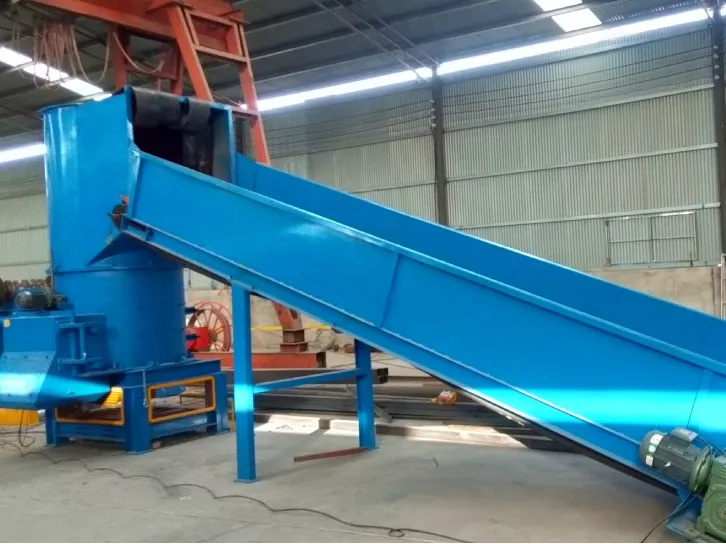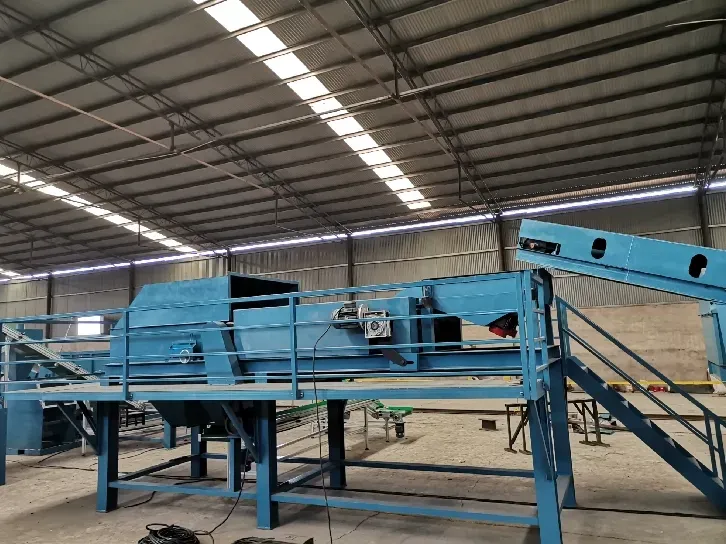Eddy current separators have emerged as a crucial innovation in the realm of recycling and material processing. These sophisticated devices are designed to separate non-ferrous metals from waste streams, enhancing the efficiency and accuracy of recycling processes. Their operation is based on the principle of electromagnetic induction, which generates eddy currents to facilitate the segregation of metals like aluminum, copper, and brass from non-metallic materials.

One of the standout features of eddy current separators is their ability to significantly boost the purity levels of separated materials. This precision not only ensures high-quality recycling output but also minimizes the contamination of non-metallic waste, thereby promoting sustainable waste management practices. Industries that are heavily investing in these separators include automotive, electronics, and packaging sectors, all of which seek to recover valuable metals from their production waste streams.
From a user's perspective, integrating an eddy current separator into a recycling system translates into considerable cost savings. Companies can reduce their dependency on raw materials by efficiently reclaiming metals that can be re-introduced into the production cycle. This recycling strategy not only curtails manufacturing expenses but also aligns with global sustainability goals by reducing environmental impact.

Expertise in operating eddy current separators is not to be understated. Professionals need to understand the nuances of setting the correct magnetic field strength and conveyor speed to optimize the separation process. These parameters directly influence the efficiency of metal recovery, and thus, operators must be well-trained to adjust settings based on the specific type of waste being processed.
eddy current separator
In terms of authority, manufacturers of eddy current separators have spent years in research and development to ensure these machines meet industry standards. They are built to handle the demanding conditions of industrial environments, with robust designs that include corrosion-resistant materials and advanced electronic controls to ensure long-term operational reliability. Leading brands in this sector often work closely with regulatory bodies to certify their equipment, ensuring compliance with environmental and safety standards.
Trust in the functionality of eddy current separators is backed by numerous case studies and testimonials that highlight their effectiveness. For instance, a case study involving a European electronics recycling facility showed that after installing an eddy current separator, the plant's recovery rates for non-ferrous metals increased by over 30%. Such statistics offer compelling evidence that when properly utilized, these separators can deliver remarkable improvements in recycling operations.
Moreover, the commitment to continuous innovation can be seen in recent advancements within this field. Modern models are equipped with enhanced magnetic rotor speeds and are designed to process a broader range of particle sizes without sacrificing accuracy. These improvements reflect the ongoing dedication of manufacturers to meet the evolving needs of the recycling industry.
In conclusion, the eddy current separator stands as a testament to engineering excellence and environmental stewardship. Its ability to efficiently recover valuable metals from waste not only supports economic growth but also contributes to a more sustainable future by minimizing landfill contributions. For industries focused on optimizing resource use and reducing carbon footprints, investing in these separators is an invaluable strategic decision.


